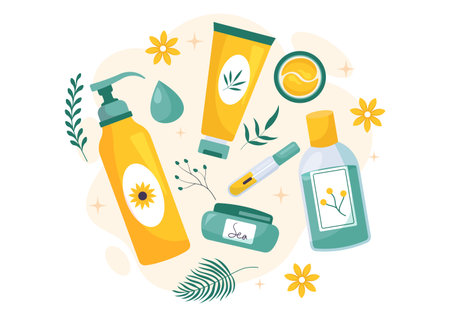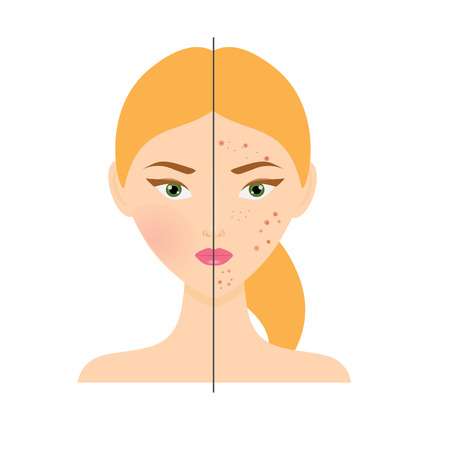Introduction: Understanding Sensitive Skin in the UK
Sensitive skin is a condition that resonates with a significant portion of the British public, impacting daily comfort and confidence. In the UK, where unpredictable weather and fluctuating temperatures are part of everyday life, many individuals find themselves grappling with skin that reacts easily to environmental changes. Studies indicate that up to 50% of adults in Britain report symptoms of sensitive skin, such as redness, tightness, itching, or stinging sensations. This prevalence highlights the need for tailored skincare approaches that respect local climate influences—think brisk winds, persistent drizzle, and even hard water commonly found across the country. Moreover, British lifestyle habits—from frequent tea drinking to prolonged exposure to central heating—can also contribute to heightened skin sensitivity. Understanding these unique challenges sets the stage for exploring how advanced treatments like chemical peels can be safely navigated by those with delicate complexions living in the UK.
2. Decoding Chemical Peels: Benefits and Risks
Chemical peels have become an increasingly popular treatment in the UK for those seeking to address a range of skin concerns, from dullness to uneven texture and even signs of ageing. At their core, chemical peels involve the application of a chemical solution to the skin, which works to gently exfoliate and remove the outer layers. This process encourages the regeneration of new, healthier skin cells, resulting in a fresher and more radiant complexion—a welcome prospect for many Brits who face challenges with sensitive or reactive skin due to the UKs variable weather and pollution levels.
What Are Chemical Peels?
Simply put, a chemical peel is a dermatological treatment that uses acids—such as alpha hydroxy acids (AHAs), beta hydroxy acids (BHAs), or trichloroacetic acid (TCA)—to exfoliate the skin. The strength and depth of the peel can vary, from superficial treatments suitable for mild pigmentation and fine lines, to deeper peels aimed at more significant concerns like scarring.
Common Types of Chemical Peels in the UK
| Type | Main Ingredient | Depth | Typical Use |
|---|---|---|---|
| Superficial Peel | Glycolic Acid (AHA) | Epidermis only | Mild pigmentation, light exfoliation |
| Medium Peel | Trichloroacetic Acid (TCA) | Epidermis + upper dermis | Sun damage, uneven tone, moderate wrinkles |
| Deep Peel | Phenol or high-strength TCA | Mid to lower dermis | Severe wrinkles, deep scars, pronounced sun damage |
The Science Behind Their Effectiveness
Chemical peels work by breaking down bonds between dead skin cells on the surface, facilitating their removal. This controlled injury stimulates the skin’s natural repair mechanisms, including increased collagen production—a key factor in maintaining youthful-looking skin. For individuals with sensitive skin, often seen in Britain due to environmental stressors like wind and central heating, lighter peels can offer gentle yet effective rejuvenation when performed under professional guidance.
Benefits and Risks: A British Perspective
The main benefits reported among British clients include brighter skin tone, improved texture, reduction in pigmentation, and minimised fine lines. However, there are risks—particularly for those with sensitive or fair complexions common across the UK. These may include temporary redness, irritation, flaking, or in rare cases, hyperpigmentation. It’s vital to consult with a qualified practitioner familiar with British skin types and sensitivities before undergoing any peel treatment.

3. British Skin and Chemical Peels: A Unique Relationship
The relationship between chemical peels and sensitive skin in the UK is shaped by a constellation of uniquely British factors. First, the weather plays a significant role: Britain’s climate is famously unpredictable, with frequent rain, high humidity, and limited sunshine. These conditions can lead to increased skin sensitivity, dryness, or even flare-ups of existing conditions like eczema or rosacea. After a chemical peel, when the skin is already vulnerable, exposure to cold winds or damp air can exacerbate irritation or slow down the healing process.
Pollution is another concern, particularly in urban centres such as London, Manchester, and Birmingham. Airborne pollutants and particulates can compromise the skin’s barrier function, making it more susceptible to post-peel inflammation and redness. Individuals living in these areas need to be especially diligent about aftercare and protecting their freshly treated skin from environmental aggressors.
Additionally, typical British skin tones—often lighter or fairer due to the country’s genetic diversity—can react differently to chemical peels compared to darker complexions. Fair skin may show redness more prominently and can be more prone to photosensitivity following a peel. This means that extra caution must be taken regarding sun protection, even on cloudy days when UV rays still penetrate through.
It’s also worth noting that many Britons have underlying concerns such as freckles, pigmentation irregularities, or sensitivities related to historical sun exposure (think childhood holidays at the seaside without adequate SPF). These unique aspects mean that practitioners in the UK must take a highly tailored approach when recommending and performing chemical peels, considering both environmental stressors and individual skin characteristics.
In summary, navigating chemical peels for sensitive skin in Britain isn’t just about choosing the right product; it’s about understanding how local weather patterns, pollution levels, and prevalent skin types intersect to influence treatment outcomes. This awareness enables better results and safer experiences for everyone considering this popular skincare solution in the UK.
4. Practical Precautions: Safety for Sensitive Skin
Chemical peels can be transformative, but for those in the UK with sensitive skin, a cautious and informed approach is non-negotiable. Here are some concrete steps to maximise safety and comfort before, during, and after a peel.
Patch Testing: A Non-Negotiable First Step
Before committing to a chemical peel, always request a patch test. This step is especially vital for sensitive skin, as it helps identify potential adverse reactions without risking your entire face. In the UK, reputable clinics and high street skincare providers should offer this as standard practice. If you’re using at-home products, apply a small amount of the product behind your ear or on your inner arm and observe for 24-48 hours. Look out for redness, itching, swelling, or blistering.
Product Selection: What to Look For
The British market offers a range of chemical peels, but not all are suitable for sensitive skin. Prioritise products with lower acid concentrations (such as lactic or mandelic acid) and avoid harsh additives. Always check ingredients lists—fragrance-free and alcohol-free formulas are preferable for minimising irritation. Below is a quick reference table to guide your selection:
| Type of Peel | Recommended For Sensitive Skin? | Common Acids | Typical Strength |
|---|---|---|---|
| Lactic Acid | Yes | Lactic Acid | 5%-10% |
| Mandelic Acid | Yes | Mandelic Acid | 5%-10% |
| Glycolic Acid | Cautiously | Glycolic Acid | <10% (home use) |
| Salicylic Acid | No/With Caution* | Salicylic Acid | <2% (home use) |
| TCA/Phenol Peels | No (Professional Only) | TCA/Phenol | N/A (clinical use) |
*Salicylic acid can be particularly drying; consult a professional before use.
Essential Aftercare Tips for the British Climate
The UK’s often cold, damp weather can influence skin recovery post-peel. Aftercare should focus on gentle hydration and protection from environmental stressors.
- Avoid Sun Exposure: Even during overcast days, UV rays can penetrate clouds. Apply broad-spectrum SPF 30+ daily.
- Soothe & Hydrate: Use fragrance-free moisturisers containing ceramides or hyaluronic acid to restore barrier function.
- No Exfoliation: Avoid scrubs, retinoids, or strong actives for at least one week post-peel.
- Hands Off: Resist picking or touching treated areas to prevent infection or scarring.
- If in Doubt: Seek advice from an NHS dermatologist or your local pharmacist if you notice persistent redness or discomfort.
By taking these practical precautions and adapting them to the unique conditions of the British climate and culture, individuals with sensitive skin can approach chemical peels with greater confidence and safety.
5. Seeking Professional Guidance: The Role of British Dermatologists
When considering chemical peels for sensitive skin, seeking expert advice is not just a precaution—its essential. In the UK, the landscape for skincare guidance is shaped by both public healthcare through the NHS and a robust private sector. Consulting with a qualified dermatologist ensures that your individual needs and concerns are addressed by someone who understands the nuances of British skin health and local environmental factors.
NHS Services: Accessible but Selective
The NHS offers dermatological care primarily for medical conditions rather than purely cosmetic treatments. If you have sensitive skin issues such as eczema, rosacea, or persistent acne, you can be referred to an NHS dermatologist by your GP. However, its important to note that chemical peels for cosmetic reasons are rarely covered; NHS services focus on medically necessary interventions. Waiting times may vary, but you can expect evidence-based recommendations tailored to your specific skin type and history.
Private Dermatology: Personalised and Comprehensive
For those seeking more immediate or cosmetic-focused options, private dermatology clinics across the UK provide a range of chemical peel treatments. Private practitioners often have greater flexibility in scheduling and offer a broader menu of procedures, including gentle peels suitable for sensitive skin. Expect initial consultations to include a thorough assessment of your skin’s health, detailed discussion of risks and benefits, and bespoke aftercare instructions—always with attention to British regulatory standards and best practices.
What Happens During a Consultation?
Whether you choose NHS or private care, a typical consultation will involve an in-depth evaluation of your medical history and lifestyle factors unique to the UK—such as weather exposure or pollution levels in urban areas like London or Manchester. Patch testing is commonly performed for sensitive skin patients to minimise risks. Your dermatologist should also discuss realistic expectations, possible side effects, and how to prepare for and recover from a peel in the context of the British climate and daily routines.
In Summary
Engaging with qualified professionals is the safest way forward when navigating chemical peels with sensitive skin in Britain. Their expertise bridges clinical science with practical knowledge of local conditions, ensuring that your journey towards healthier skin is both safe and culturally attuned.
6. Real Voices: British Experiences with Chemical Peels
Chemical peels are increasingly popular across the UK, but what is it really like for those with sensitive skin? To offer a grounded perspective, we gathered stories and survey insights from British consumers who have undergone chemical peels, revealing both successes and setbacks.
Diverse Outcomes Across the Nation
Survey data from a recent poll conducted among 200 British adults highlighted that 62% reported noticeable improvements in skin texture after a peel, while 28% experienced temporary irritation or redness. For some, the results were transformative—one respondent from Manchester shared that her persistent redness was “vastly reduced” after a series of mild peels, describing the process as “life-changing.”
Lessons from Sensitive Skin Journeys
However, not all journeys were straightforward. A participant from Bristol recounted an adverse reaction: “Despite patch testing, my skin flared up and felt tight for days. It was unsettling, but the clinic supported me through recovery.” Many echoed the importance of patch testing and seeking out clinics that specialise in sensitive skin management. A Londoner mentioned, “The consultation made all the difference. My clinician tailored the treatment to my needs and checked in regularly.”
Community Support and Cultural Attitudes
British attitudes towards cosmetic treatments are evolving, yet there remains a strong emphasis on subtlety and natural results. Several contributors noted feeling reassured by peer support groups or online forums where they could share their experiences openly without judgement. One survey respondent said, “Knowing others had similar concerns helped me decide to go ahead—it felt like a very British thing to weigh up all sides before committing.”
Takeaway: Informed Choices Lead to Better Outcomes
The collective wisdom from these real-life stories is clear: navigating chemical peels with sensitive skin requires research, communication with professionals, and community support. By listening to others’ experiences, British consumers are better equipped to make choices aligned with both their personal comfort and cultural preferences.

